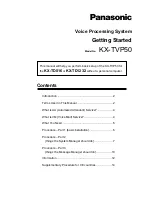
65
Before deployment of Switchboard, the answer to this dilemma was to assure that the codec located in the studio
has a fixed, public IP address. By fixed, we mean that the address is allocated exclusively by the ISP, and that
address is entered manually into the configuration of the codec and not subject to change. This scenario works
because IP “calls” are usually initiated from the field. As long as the field unit can find the fixed address of the
studio unit and send a stream to it, a reverse channel can be created easily and automatically by the studio unit,
using the source information contained in the incoming packets. Even in this scenario, the studio IP address must be
memorized or input into each codec individually.
The first function Switchboard works around is the dynamic IP address problem by acting as a Directory Server.
Codec users simply log in to the free server and are given an account name and password. Once logged in, it’s a
simple process to input the details of each codec owned. On the codec itself, the user will input a familiar name by
which the codec will be known within that group.
Once enabled, a codec in the group that is physically connected to the internet will sync with the server. The
current public IP address of the codec will be obtained by the server and the user directory will be updated with the
new IP address.
In addition, the availability status of the codec is also updated. The codec will “ping” the server if anything changes
(address, status, etc). As we’ll see, this “ping” function will prove useful in other ways.
Содержание ACCESS 2USB
Страница 1: ...Product Manual ...
















































